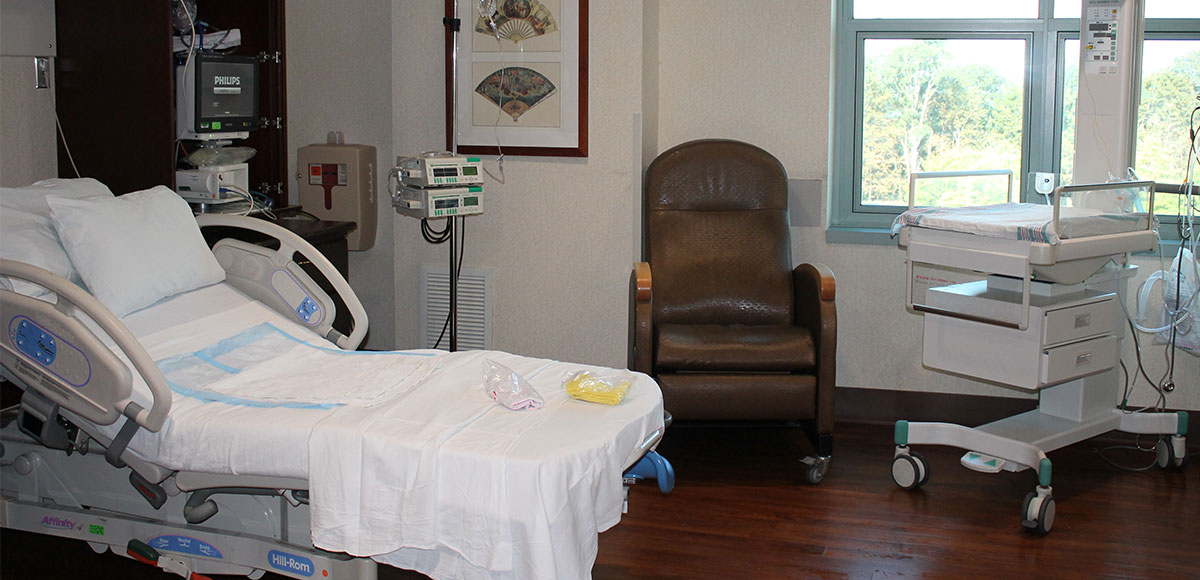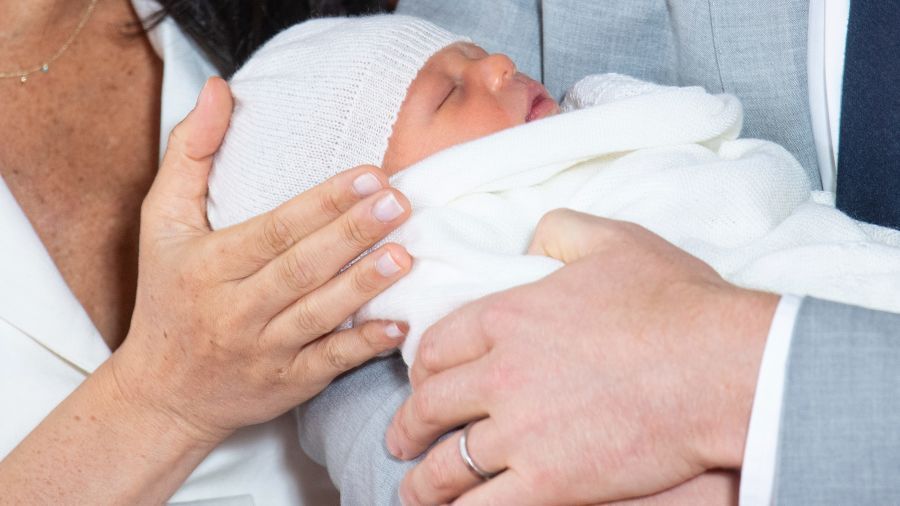In this post, we’re going to talk about the preparation and what actually happens when you go to the hospital to give birth.
When arriving at the reception

At home:
Do you have other kids at home that you need to watch? Is there someone on call that you can call for to come to help them. Make sure all of these things are in order. Around week 36 even, to make sure that when the time comes you’re ready to pick up and go and you don’t have to worry too much about the things around.
In the hospital reception:
When you arrive at the hospital at reception. A few things will happen if you’re ready to give birth.
The first two things are that they put an IV line inside your arm to give them direct access to the blood flow. And secondly, they’ll give you a monitor on your stomach to monitor the baby’s heartbeat.
Now some hospitals have monitors that are portable and not with wires attached to them that you can’t move around. If your hospital has this make sure you ask for it so that you can continue to move around even as you’re being monitored. If your hospital doesn’t have it that’s “OK”. And the monitor doesn’t mean you can’t move around. It’s just You’ll have to put it in a way that it’s still comfortable for you to toss and turn and make sure that you can keep the movement.
The IV line that they put in your arm you may not need it right away and you may not want it right away. It’s not very comfortable. Some people feel uncomfortable because they can’t bend their arm or move around freely. So especially if you don’t need antibiotics if you are GBS negative, you can ask to have the IV line put in a little bit later depending on where you are in your contractions and with the dilation of the cervix. If you still have a ways to go before the start of the Active Birth asked to delay the I.V. line so that you can walk around more freely. And it’s a little bit more comfortable.
How much separation from the baby?
First of all, if you’re about to give birth oftentimes this is when they register you to the ward afterward. Now depending on what hospital there are.
There are different procedures and protocols as to how much separation you want from the baby. Maybe you want to sleep at night afterward and have the baby put with the other babies so that the nurses can take care of them and that’s “OK”. But there are other places where there is zero separation and that you will not be separated all from your baby. And this is something that you might have to tell them ahead of time. So keep this in mind now is the time to let them know.
In the delivery room: Make sure to ask about all the conditions
Lastly, different hospitals have different conditions in each delivery room. Some might have a natural delivery room, showers, baths, exercise balls, and some depending on what facility you’re going through. It’s very important to familiarize yourself with the hospital. So that you know what to ask for when you get to the reception.
If you don’t know how to ask for it they might not give it to you automatically. So have these things in mind. Be familiar with the facilities that you’re going to and that’s the time when you get to reception to ask for these things.
Now if you’re going through contractions the first thing in your head might not be oh I wonder if this room has a bath or shower. So this is where your partner comes in. Who’s going with you to the hospital. Make sure that they have a list of things that you know that you want and then your partner can make sure that all these things that you want will happen when you get there.
Entering the delivery room

All right so your contractions are progressing great. Your cervix is dilated and you’re ready to go into the delivery room. What should you be thinking about or what should you plan for when going into the delivery.
Who do you want there
Do you want to go just with your partner your spouse or your loved one? Maybe you want your mother there with you. You should think about this ahead of time and make sure that people know if they’re coming in with you or if they’re staying outside. This is not a time for misunderstanding and it’s a time with very high-stress levels. So it’s something that you should decide upon beforehand.
Takes control of who comes in and out
Next thing is the midwife that will be there with you. Will be there constantly and a doctor might come in and out. However oftentimes especially at university hospitals, there can be a number of students walking around and this might be “OK” with you. You might say Come and learn. The more the merrier. You might feel comfortable with all of this but you might want more privacy in the room. And so this is something that you should establish ahead of time.
Again with the high stress of the situation your partner needs to know what you’re planning on having and what you want. So he or she can take control of this situation and make sure that only the people that you want in the delivery room are there.
Monitor
Now at reception, there’s usually an area for you to get the monitor of the baby’s heartbeat. But in the delivery room there’s also a monitor and again asked for a portable monitor if you can.
Portable monitors will help you move around more freely. And this is something very important to help you get through the contractions before the births.
If they don’t have a portable monitor Don’t worry you can still move around with monitors that are connected with cables. It’s a little bit less comfortable but you can make it happen. However, if this is an option to have a portable monitor ask for it.
Vaginal examinations
Now medical teams have a tendency to very frequently check to see how much the cervix is dilated or how the birth is progressing. And this is “OK” to do a few checkups at the beginning but if you feel like it’s a little bit excessive. Make sure you say something, you want as few vaginal examinations during this time as possible to both help the birth progressed naturally as best as possible. And also for the discomfort. So make sure you or your partner are there to say you know maybe we don’t need this final examination. And then the medical team will listen to you.
Enema
Now during birth. It’s very common for some stool to get out of the rectum as you’re pushing. This is very common. And nobody in the room should get excited if this happens because of how common it is.
However, there are women that try to prevent this by giving themselves an enema ahead of time. This is something you can discuss with your doctor if you want. And it’s something that you can buy at your local pharmacy. And so when you go into the delivery room or when your contractions start then you can give yourself the enema and clear out your bowels.
Clothes
That’s very common when women go to the hospital. They usually just take the hospital robes that are given to them because that’s what people do.
Well, today you can buy clothes for very very inexpensive prices and you might want to plan to bring something to give birth in instead of the hospital robe which is a little bit more comfortable for you.
Now if this is what you choose to do it’s better if you do a skirt and a shirt because you might have to lift up your shirt to put the monitor on your stomach, so keep that in mind.
However, a cheap dress that’s comfortable for you and it works. This can be something that will be much more comfortable than the hospital robe that they give to you. And it might make you feel better as you’re giving birth as well. So keep this in mind if you want to bring some of your own clothing to give birth and it might be a one-time use-type thing.
Atmosphere
What progresses the contractions is a hormone called oxytocin or is the hormone of love as some known. What refrains the contractions from progressing is the stress hormone called cortisol. How do you make sure that there’s more of the relaxing love hormone and less of the stress hormone? You keep the room with the calming atmosphere.
Anesthesia – epidural
Now lastly and this might be even a little bit before the delivery room is the types of anesthesia that you get. Now some women prefer to give birth naturally without any type of painkillers so that they can feel the birth. There’s nothing wrong with choosing one of the types of anesthetics that will help you through the birth.
3 main types of Anesthesia:-
Laughing Gas:
The first is laughing gas. Laughing gas can help you with the pains of the contractions. It’s a very type of superficial so doesn’t go into the placenta it just stays in the lungs and then gets into your head. Easing the pain levels.
IV Line:
There’s another type of anesthetic that you can take which is IV. they give it to you through the line in your arm straight into the blood. However, this is very very rarely given because it also goes through the placenta and so it gets to the baby as well.
Epidural:
The most common and effective type of anesthetics that is given is called epidural. This is a little bit misleading because epidural is actually a layer in your nervous system that the painkillers are given to. It’s thought the name of the material self that’s giving. If you get epidural you have to be careful because it has some side effects.
One of the things that can cause falls so if you have to go to the bathroom make sure that you go down in a wheelchair and you have to stay on your bed at all times. If you’re given an epidural there are some complications because you’re putting a needle into your back so it can hit different parts of the nervous system rarely causing paralysis but it can cause temporary paralysis which can lead to falls and this can be dangerous. So once again if you’re taking epidural to make sure that you have someone watching you preventing you from falling. If you get off the bed.
Dealing with contractions

Now the best way to get through contractions is to, first of all, be in a place that is most comfortable for you. And this is probably your home and not the hospital. So if you can stay at home for as long as possible before going to the hospital and making sure there’s adequate time before birth.
The techniques focus on four main points:
Breathing
You have to make sure that you keep breathing and slowly and calmly to get oxygen to your body as you’re going through contractions.
Contractions are the muscles of the uterus contracting or being used. Now when a muscle uses the energy it needs more oxygen. Now some people because of the pain tend to freeze up and then they will breathe at all. But this can not be huge and contractions.
How does your partner remind you to breathe? By showing you exhaling slowly. If you exhale slowly together you know to get you into a rhythm of breathing slowly and circulating that oxygen through your body to help you with these contractions. So make sure you remember to breathe and if your partner sees that you’re not breathing slowly and properly he should show you by exhaling slowly reminding you to breathe.
Movement
There are a few of them in this type of category. But we’re going to talk about movement between contractions to help you get through them. Now it’s best not to lay down in your back. That’s probably the worst thing that you can do during contractions to help them progress and help ease you through the pain. But you want to be up kind of shaking your pelvis a little bit from side to side doing figure eights and making sure that your pelvis and that your body is constantly moving to help you with the contractions.
Touch
Touch especially between two partners. Skin to skin contact either hand on an arm, hand on the back. This can really help release oxytocin of the body. Now oxytocin helps progress the contractions and it helps reduce the cortisol which is something that prevents the contractions.
This is a very individual point some people might not want to touch at all in some pain. Some people might really enjoy the feeling of the touch of their partner their mother a loved one. So make sure that there’s a lot of communication to see what’s good and what feels good for you.the pregnant woman.
Atmosphere
Again you want to reduce stress as much as possible to lower the cortisol levels during this time. How do you create the atmosphere? With lighting, dim lighting, music, speak in a slow low toned cool and calm voice. Don’t get excited about anything. Make sure everything is calm and that everybody in the room is concentrated and focused on helping the pregnant woman calmed down.
If there’s someone in the delivery room causing stress, unwanted stress get them out of the delivery room. They don’t need to be there especially if they’re causing stress. So make sure that you create an atmosphere that is as relaxing as much as possible.
When the baby comes out

Right after the baby comes out hopefully you hear that first breath of air and the crying starts immediately. This is one of the most exciting times.
Umbilical cord does not have to be cut immediately
The umbilical cord does not have to be cut right away. And in fact, they found that if you wait a little bit before cutting it the immune system the baby is a little bit stronger rather and if you cut it right away. There should be a few pulses of the umbilical cord that will be the pulses of the mother and when the pulse stop then you can even wait a little bit after before cutting the umbilical cord. So if you see the medical team go to cut it right away. Be sure to inform them no. We want to wait a little bit
Who cuts the umbilical cord? This is something that you can ask to do or ask your partner to do. And it’s a great way to take part in the procedure and the excitement of the birth. Now you might want to freeze the stem cells. There are a few companies that deal with this freezing the stem cells that are inside the umbilical cord and this can later maybe help the baby if there’s any type of blood problem in future.
If this is the case then you need to cut the umbilical cord a little bit earlier but this is something that you plan ahead of time with the companies. But in any other case, you should wait before cutting the umbilical cord. Once the baby gets cleaned off a little bit just a little bit wipe down with a few towels.
Skin to skin contact
The first thing that should happen after being born is skin to skin contact with the mother. Now, this can be even before you cut the umbilical cord. Skin to skin contact is one of the healthiest things for both the mother and the baby. It really helps with breastfeeding. And this is something that you should do also in the delivery room breastfeed have the baby lay there for about half an hour with the skin to skin contact before you try breastfeeding. And then you can try it for the first time.
The amazing thing about this process is that it works with the father too. As the first days in the hospital or straight in the delivery room the baby can be put skin to skin. Also with the father and this can have a similar effect on the baby and the father creating an amazing connection between the two.
How much time you should remain in the delivery room?
You should remain in the delivery room for about two hours up until after you give birth. Every hospital is a little bit different. So make sure that you know the protocols and that you won’t be surprised after giving birth. Make sure that you know how long you can stay there and have that intimate moment with your family or with whichever loved ones you choose to have there with you. Stay there for about two hours with the baby skin to skin contact and enjoy the first moments of this new child’s life.
Bleeding seriously
Now there are certain cases where the women can bleed a little bit or even a lot after giving birth. There’s been a study showing that if a woman bleeds seriously more than a leader and a half it can impair her ability to breastfeed. But the interesting thing about this study is that the reason why her breastfeeding ability was impaired was because of the separation from the baby.
So even if there is a problem with bleeding even if the woman has to go to a procedure having the baby close to the Father or trying to eliminate that separation as much as possible can really help for the breastfeeding afterward.
Control Bleeding
There’s a number of steps and a number of things that can be done. They can make sure that all the parts of the placenta are out. That’s a common reason why the woman can lead after giving birth but bleeding is very normal. Just up until a certain amount you should try to wait as much as possible try to encourage the medical team to wait before giving a shot of something like pitocin which is an analog of oxytocin and this is something that encourages the uterus to crunch up and contract. Getting rid of the bleeding.
Treating the baby in the hospital

In the hospital, there are a few treatments that the medical team will recommend for your baby. It’s important to understand which of these treatments you want and which you don’t want to take control and that you had the experience that you choose.
Separation
The amount of separation between you and your baby. There are certain places where the baby sleeps in a different place at night giving the mother a chance to rest and maybe not even breastfeed at night.
They’ll have the medical team provide the baby with the supplements or a different type of milk while the mother sleeping. And if this is what you want. Make sure to let them know. But if you want to breastfeed it’s best to do it as often as possible as the baby needs right from the beginning.
If breastfeeding is a little bit tougher as the day goes on or in the next day. Keep up with that skin to skin contact for about half an hour before trying to breastfeed.
Giving the baby shower
It’s quite common for all the babies in the hospital all the newborns to have a shower while they’re there. A baby doesn’t need a shower in the first couple of days of its life unless there’s a specific reason. There is no need to give a baby a shower so if you choose not to. This is perfectly acceptable.
A baby is comfortable in the fluid that they come out with. And so if you leave them there for a few days with a little bit of that fluid on them and again you can help like cleaning them with baby wipes or a towel. But by leaving a little bit of fluid it helps the baby accommodate into a new environment.
Antibiotic eye drops
As the baby comes out one of the options is to give them antibiotic cream on their eyes. Now, this can be good if there’s any risk of infection from the mother. Like any risk of STDs, chlamydia, gonorrhea or GBS. If you have any risk for these things it’s important that you give the baby the antibiotic cream that the medical team will recommend.
If however there is no risk of these things then you can avoid giving the baby the antibiotic cream. It’s just a little bit of discomfort. There’s no side effects to it or anything like that. But if you have absolutely no risk of infection then you don’t have to give them the empty about a cream.
Vitamin K
The next option that the medical team will recommend is vitamin K for the baby right after it comes out. Now, this is given in two forms either with an injection or with drops. Drops or absorbed a little bit less effective than the injection. But there are some parents that prefer not to give their baby a shot right after it comes into this world.
Vitamin K is very important because it plays a role in the coagulation and the blood clotting of the baby. Don’t give up on this. This is something that I highly recommend that you not skip either with drops or with injection. I recommend injection but if you don’t want to that’s “OK” but don’t give up on the vitamin K. It’s very important.
Hep B
Some places give babies Hepatitis B vaccinations right in the delivery room after birth. Now if you have any risk for hepatitis B then you should give your baby a vaccination as giving birth because this will prevent him from developing a chronic infection. But if you live in a place where there is no Hepatitis B endemic or that you don’t have any chances of having hepatitis B you don’t have to give them this vaccination right away. You can do it at one month or two months old the checkups.
Check metabolic diseases
Lastly, depending on where you are or what hospital they’re in it there’s a very cheap and easy way of checking for a number of metabolic diseases.
This is done with an easy blood test of the baby and you should not give up on this because it can prevent some serious complications in the rest of the baby’s life.



